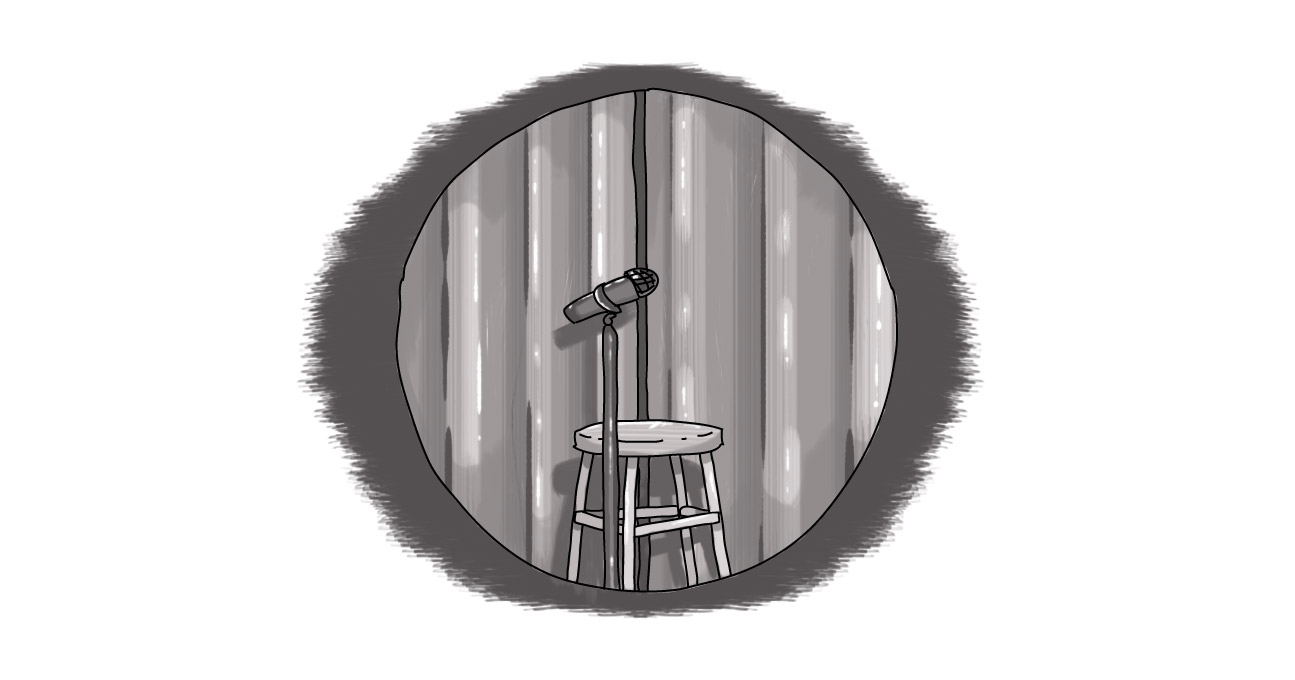Accessibility Matters - Audio Description: How Much is Enough?

Finding the balance between what's ideal, what's needed, and what's acceptable is a key feature -- and challenge -- of accessible practises. And while most people want to do the right thing, it can be hard for people to know what's needed -- and how much is not enough.
This is clearest in the world of audio description, an additional expense for many that is often seen as a frill or extra.
This came up in a discussion this week among several echidnas following the release of Marvel's Daredevil on Netflix. In the ever-expanding repertoire of comic books turned into motion pictures, this is a whole series based on the story of a blind lawyer by day who doubles as a superhero once night falls.
The irony was though that this show wasn't initially offered with audio description. Although blind viewers could watch it, they'd likely miss things or have to commandeer a friend to live describe for them.
Netflix accessibility has been a problem for years. Though they have shows available that are audio described on television, these tracks aren't available on Netflix. If available, captions are full of errors. Their web player is usable but not without frustration. And, until recently, Netflix appeared unresponsive to complaints.
This week Netflix started offering audio description for Daredevil and promised to add it for their other shows, including House of Cards and Orange is the New Black. As of this writing, audio description is available under Languages on the web player and on Apple TV, and can be accessed on iOS, so long as the user signs out, then signs back in.
But then the discussion turned to Digital Echidna's own videos. We've captioned our videos (and Jay talked about the captioning process back in January), but they're not described. We want to walk the walk, but was full audio descriptions of a speech or an informational video necessary here? Or desired by the users?
In the case of movies and television, the detailed nature of these programs means that everything has a purpose. New characters must be introduced by the describer so a viewer remembers who's speaking when they appear next. Facial expressions or a character's distinctive physical characteristics might influence the plot in some way. Their clothing or props might be relevant. It all depends on what will affect the plot later.
On top of that, there's the action that needs to be described -- and it all must somehow fit into the milliseconds-long spaces between dialogue.
This type of audio description is usually done by a third party describer who pre-watches the video and writes a script of descriptions. It is a labour-intensive and, I suspect, expensive endeavour. And, in Canada, the resource requirement can be doubled with the need for bilingual description in some cases.
In a video intended for information rather than entertainment, the ancillary details are less important: a person's every action doesn't have the same relevance. Makers of informational or promotional videos also likely don't have the budget for a third-party professional describer. (There are volunteer services out there but I'm uncertain of their quality.)
In such an instance, embedded description – or description given by the subject of the video – might be all that's needed. This would mean extra care should be taken when writing video scripts, but it shouldn't require excessive time and effort.
A brief example might help. In Digital Echidna's introductory video, the focus is meant to be on the information given through the spoken words of Andrew, Gabrielle, and Victor. The background visuals of the in-office experience may enhance the video but they don't provide any more information than the spoken word does. The only information I think I'm not getting is who the other speakers are. As my colleagues, I recognize their voices but someone unfamiliar to the company wouldn't.
If there is information provided in the audio that describes any visual, or if visuals don't provide any information in themselves, then separate audio description isn't required. If there are visuals that are not described, but no significant action between spoken audio, rework your video script so as to imbed description in. An example would be something along the lines of "on my screen you can see the pie chart of revenue distribution. Our widget sales [the bright blue section] are 60 per cent of our revenue stream, which is up for us from last quarter." This gives both visual cues and the necessary information for someone who can't see the chart at all.
Avoid phrases such as "this one over here," or "the blue line on the left." These are not quite descriptive enough. Also be sure to introduce yourself as a speaker and introduce any newcomers. If you are writing something on a blackboard or similar, either read what you're writing as you write it, or take the time to read it fully once finished.
The short answer to where is the line for audio description is the amount of information provided in a video, similar to alt text for images. Describe your videos as you would your still images and you'll be well on your way to full accessibility.
Fail to do that and you risk confusing your intended audience.
Do I have to add audio descriptions to my videos?
How do I caption videos?
SUBSCRIBE TO OUR E-NEWSLETTER
 Subscribe
Subscribe


